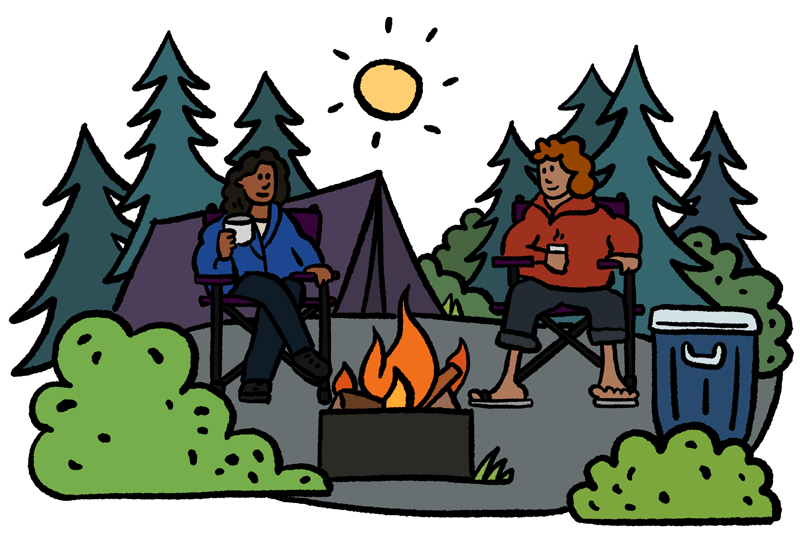Las Vegas National Wildlife Refuge Camping
notifications Text me when there's a cancellation at Las Vegas National Wildlife Refuge

The Las Vegas National Wildlife refuge is situated within a unique ecological and cultural crossroads. Human history in the region traces back to earlier than 11,500 BCE, used by Paleoindian and Archaic period hunter-gatherers, and later Ancestral Puebloan and Plains Woodland cultural groups. While Spanish conquests targeted larger Pueblos, like the nearby Pecos Pueblo in Glorieta Pass, the area around Las Vegas National Wildlife Refuge was largely unsettled by Euro-Americans until the Mexican Territorial Period when the Republic of Mexico opened the Santa Fe Trail to trade with the United States, and a group of individuals petitioned for a land grant to settle east of the Sangre de Cristo Mountains in 1835. The refuge is situated on a portion of the historic Las Vegas Land Grant, east of the Santa Fe Trail.
The population of Las Vegas began to grow rapidly after the Atchison Topeka & Santa Fe railroad was completed in 1879. Las Vegas was the second largest town in New Mexico with 7,000 residents by the early 1900s. In 1906, 6 years before New Mexico became a State, an ambitious irrigation project was proposed to support new irrigated pasture and farmlands east of Las Vegas: The Storrie Project. Although it’s main irrigation canal would not be completed until 1923, the project rife with real estate scandals, and homesteads and farmsteads were plagued by drought, hailstorms, poor soils, it was this historic irrigation development around the natural and man-made playas and potholes, that made these lands a perfect location for a National Wildlife Refuge.
Las Vegas National Wildlife Refuge is a protected natural area in San Miguel County, New Mexico, United States, managed by the U.S. Fish & Wildlife Service as a National Wildlife Refuge. With the Rocky Mountains to the west, the Great Plains to the east, and the Chihuahuan Desert to the south, Las Vegas National Wildlife Refuge encompasses a diversity of habitats. Located along the Central Flyway, it provides an important resting, feeding, and wintering area for migrating geese, ducks, and cranes.
Las Vegas National Wildlife Refuge rests on a plateau in the foothills with the Rocky Mountains just beyond. River canyon walls drop below the refuge on three sides. Las Vegas (Spanish for "the meadows") preserves both wildlife habitats and a slice of New Mexico's rich cultural history.
Read more about Las Vegas National Wildlife Refuge at Wikipedia
We can help! Many campsite reservations are cancelled daily. Just tell us when you’d like to camp at Las Vegas National Wildlife Refuge, and how long you want to camp for. We’ll text you when a suitable spot opens up!
Scan for cancellationsWhoops! Sometimes we make mistakes. Want to help improve the Las Vegas National Wildlife Refuge listing? Please suggest a correction.
Open to camping at other nearby parks? Here are a few other parks you'll find in the vicinity.

How was your visit to Las Vegas National Wildlife Refuge? Share your review of Las Vegas National Wildlife Refuge and help fellow nature-lovers make an informed decision.
Post a reviewTell us when, where, and how long you want to camp for. We’ll notify you (via SMS) when a suitable spot opens up at that campground—so you can nab that sold-out campsite reservation!